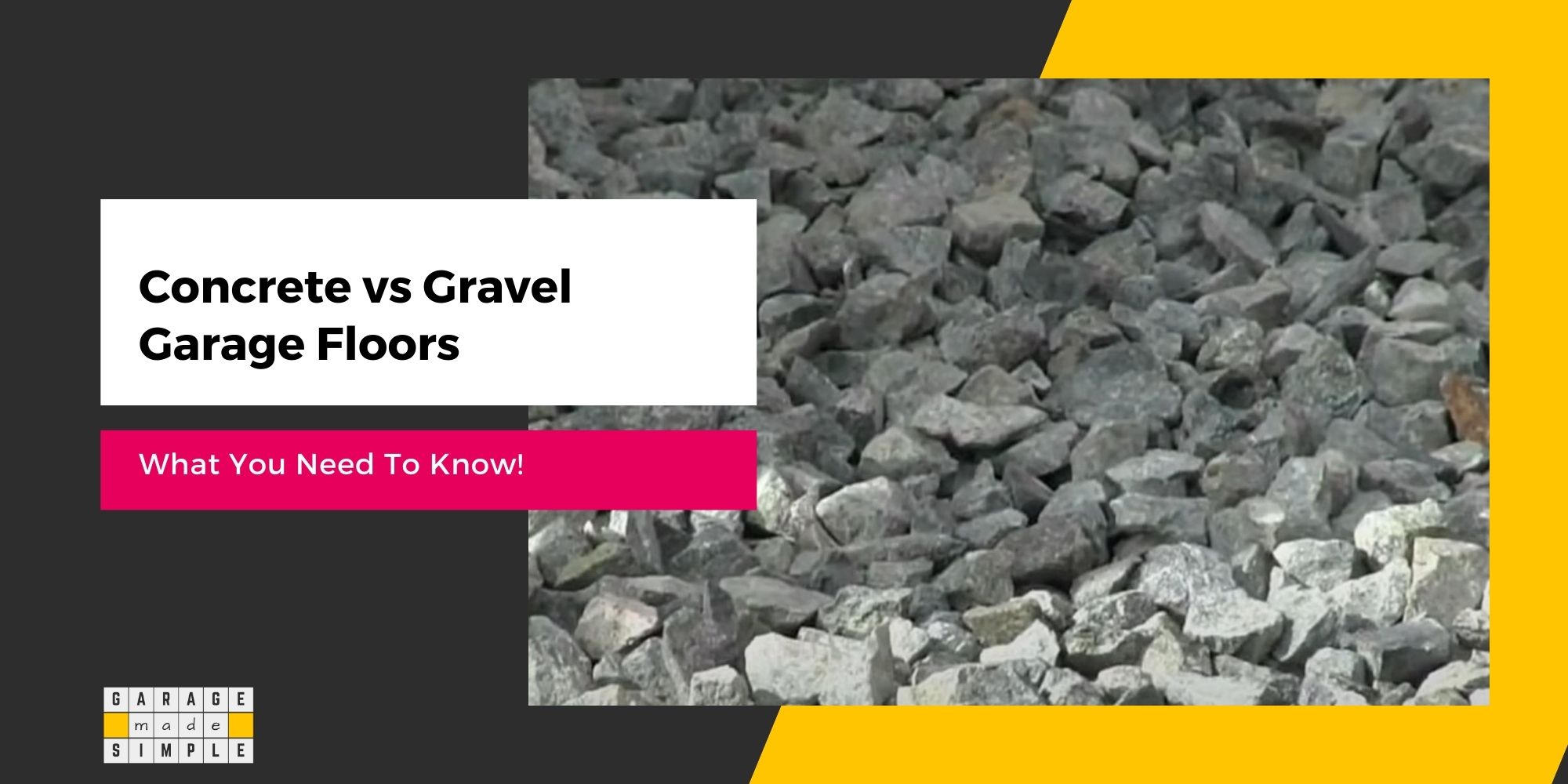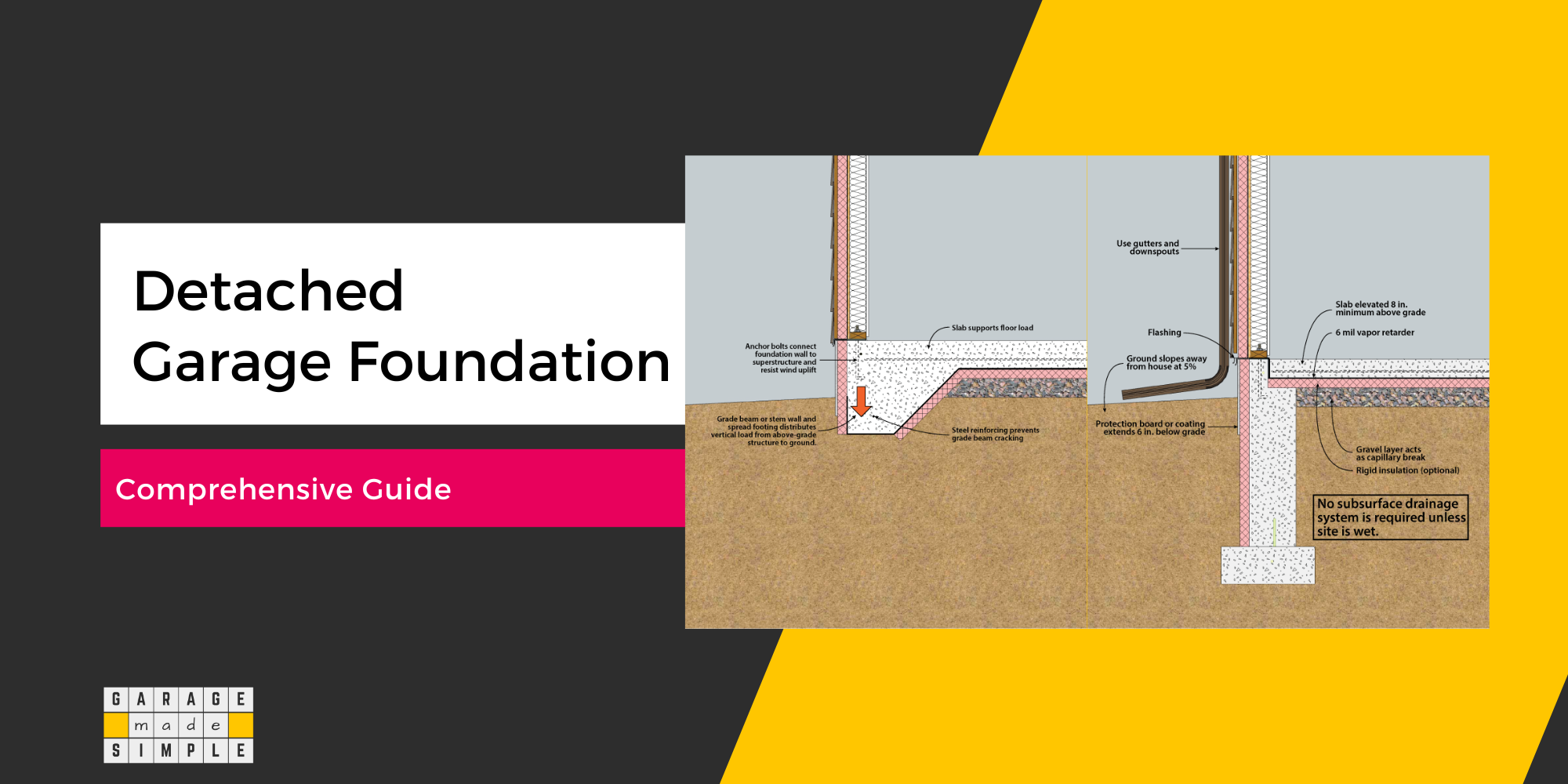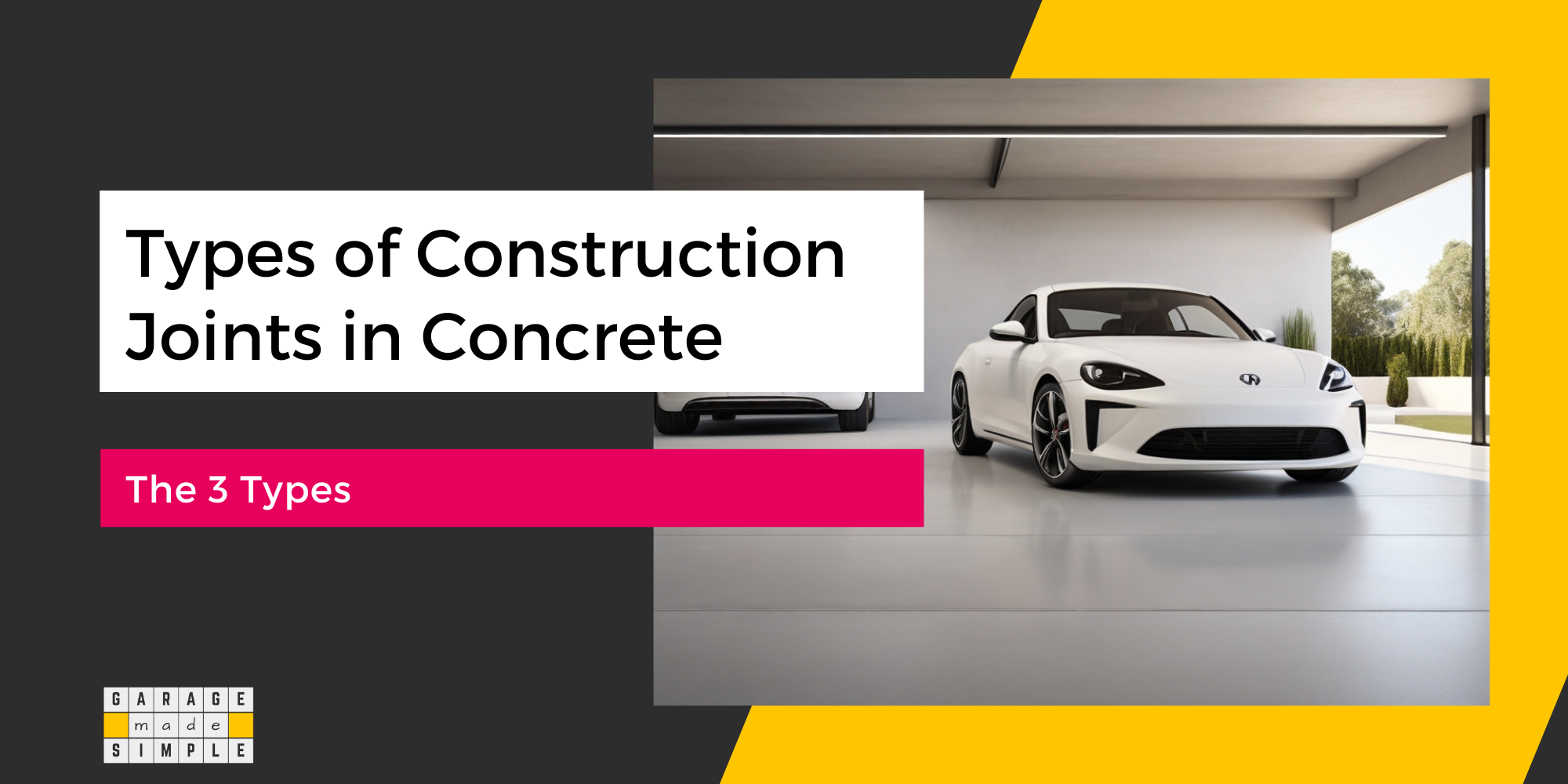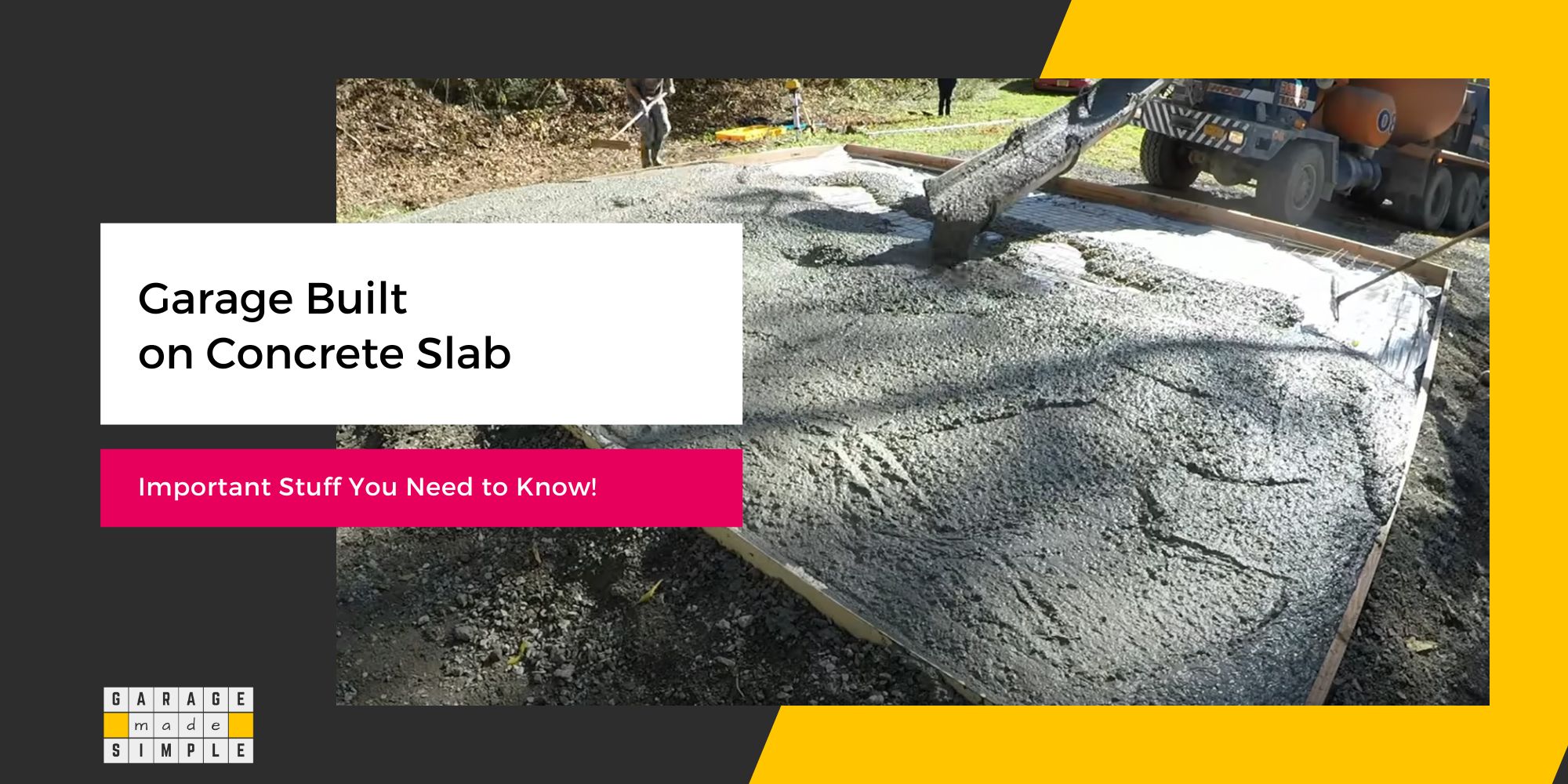Wire Mesh for Concrete Slab: Comprehensive Guide
As an Amazon Associate, I earn from qualifying purchases.
Wire mesh for concrete slab is one of the two most popular ways of pouring a reinforced concrete slab. Concrete is a robust material but relatively brittle.
It is prone to cracking under the stress of heavy loads, ground movement, or temperature changes.
Wire mesh for concrete slab acts as a reinforcement. Rebars are another option for reinforcement. However, they are expensive and not practical for concrete slabs less than 5” thick.
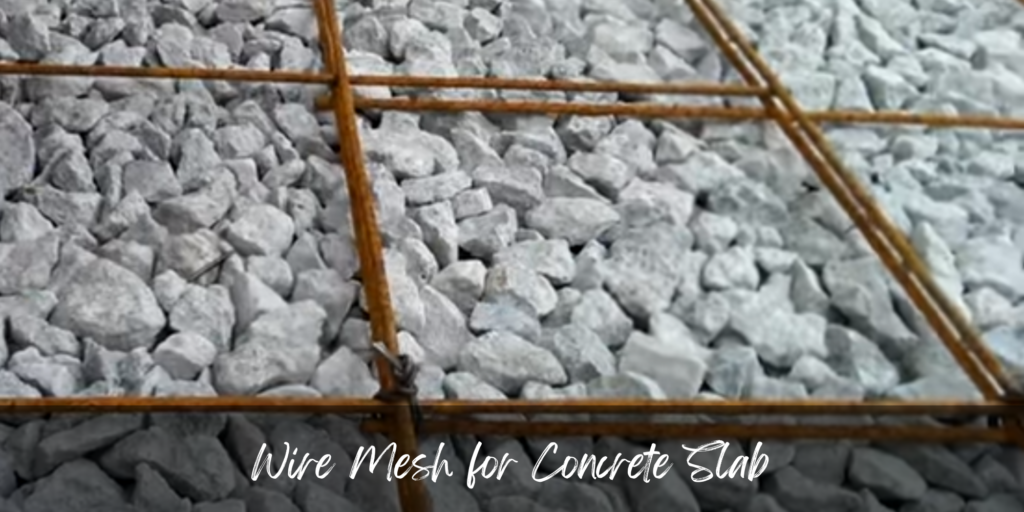
Wire mesh for concrete slab ensures its structural integrity and prevents cracks from expanding, Correctly installed wire mesh extends the life of a concrete slab and increases its load-bearing capacity.
What is Wire Mesh for Concrete Slab? Why Use It?
Welded wire mesh, also known as welded wire fabric, is a grid-like framework manufactured from steel wires, welded together at their intersections.
This wire mesh is strategically placed on chairs within the form so that it gets embedded within the concrete slab.
The wire mesh for concrete slab significantly enhances the textile and flexural strength along both the length and width of the slab.
In addition, it holds the slab together and prevents it from collapsing should the slab develop major structural cracks due to overloading or extreme ground movement.
Types of Wire Mesh for Concrete Slabs

Using wire mesh in concrete slabs enhances durability and helps prevent cracking, ensuring long-lasting, stable surfaces. The three primary types of wire mesh used in concrete reinforcement are:
1. Welded Wire Mesh
Welded wire mesh is manufactured by welding steel wires at the cross points to create a grid pattern. The design provides for consistent spacing between the wires, ensuring uniform reinforcement throughout the concrete slab.
The welded wire mesh is known for its strength and ease of use, making it a popular choice for various residential and commercial projects.
Advantages: This type of mesh is ideal for concrete slab reinforcement in both small and large applications. It works well for patios, garage floors, and driveways, offering excellent durability.
Common Sizes: Standard wire mesh sizes for concrete slabs range from 4×4-inch to 6×6-inch grids, allowing flexibility depending on project requirements. Selecting the correct size will ensure optimal reinforcement.
2. Expanded Metal Mesh
Expanded metal mesh is produced by cutting and stretching a metal sheet, creating a diamond-shaped pattern. It is lightweight yet robust, making it suitable for applications where weight is a concern.
Advantages: The expanded metal mesh structure distributes loads efficiently, especially in areas prone to soil movement. This makes it well-suited for sidewalks, garden pathways, and light traffic areas.
Unique Properties: The open diamond pattern enhances grip within the concrete, improving bonding and reducing the risk of surface cracking.
3. Fiberglass Mesh
Fiberglass mesh is a corrosion-resistant reinforcement alternative crafted from woven fiberglass threads coated in alkaline-resistant material.
Although not as strong as steel, fiberglass mesh provides adequate reinforcement for minor, decorative projects where lightweight and anti-corrosive properties are prioritized.
Advantages: This type is particularly beneficial in environments where moisture or chemicals might lead to steel corrosion. It works best in applications like garden walkways and decorative concrete surfaces.
Considerations: Fiberglass mesh is an effective choice for projects where the slab does not bear heavy loads. The mesh provides stability and crack resistance without adding significant weight.
Choosing the Right Wire Mesh
When deciding on a wire mesh for concrete slabs, consider project load requirements, environmental factors, and wire mesh size. Selecting the right mesh type and size will greatly improve the concrete’s strength and durability.
Advantages of Wire Mesh for Concrete Slab
Wire mesh is a versatile and cost-effective reinforcement material for concrete slabs. It offers several advantages, including:
Improved Tensile Strength
Wire mesh increases the tensile strength of the concrete slab in both directions. Tensile and flexural stresses get distributed more evenly throughout the slab, reducing the risk of cracking.
This is especially important for concrete slabs that are likely to be subjected to heavy loads, ground movement or fluctuating temperatures.
Increased Resistance to Crack Propagation
Wire mesh for concrete slab helps to bridge cracks that do occur, preventing them from propagating and causing further damage. The wire mesh’s interconnected grid structure helps to transfer loads around the crack.
Enhanced Durability
Wire mesh increases the durability of the concrete slab due to its ability to contain cracks. Water penetration in cracks in concrete is the key reason for early degradation of concrete slabs, particularly those that are exposed to a humid and corrosive environment.
Speeds Up Construction
Wire mesh rolls are easy to handle and lay out on the soil support system (as compared to rebars). Naturally, this helps to speed up the construction process.
Moreover, wire mesh can also be pre-fabricated into mats, which can further reduce installation time.
Reduced Costs
Wire mesh is a relatively inexpensive reinforcement material (cheaper than rebars), making it a cost-effective option for many projects. The faster construction times and reduced labor costs associated with using wire mesh can lead to further savings.
Rebar or Wire Mesh for Concrete Slab?
Both rebar and wire mesh are concrete slab reinforcement options, but your choice will depend on the slab’s intended use, thickness, and required load capacity.
Both options increase concrete tensile strength but differ in application, cost, and durability.
Rebar
The rebar consists of thick steel bars cut to size and secured on-site, providing robust reinforcement. It is highly recommended for applications where high strength and durability are required.
- Versatile Applications: Rebar can be used in slabs poured at any angle, making it suitable for a wide range of projects.
- Strength and Support: Although rebar is more expensive than wire mesh, it offers superior strength, making it ideal for concrete slabs that are 5 inches or thicker.
- Preferred for Heavy Loads: Rebar is the standard for large-scale commercial and industrial projects where high load-bearing capacity is needed.
Incorporating rebars in concrete slabs is recommended for heavy-duty applications.
Wire Mesh
Wire mesh is a grid of thinner steel wires welded in a square pattern, making it a cost-effective choice for smaller, lighter projects.
- Best for Horizontal Slabs: Wire mesh is typically used for horizontal concrete slabs and where the load requirements are lighter.
- Cost-Effective: Wire mesh is less expensive than rebar but also provides less reinforcement strength. It is suitable for concrete slabs 4 inches thick or less.
- Ideal for Small Projects: Common in smaller-scale projects, like patios, sheds, and sidewalks, where heavy-duty support isn’t necessary.
Wire mesh is an economical option for residential projects or where lower load-bearing capacity is acceptable.
Choosing the Right Reinforcement for Your Concrete Slab
For optimal results, choose rebar for projects requiring higher tensile strength and load-bearing capacity, particularly in industrial and commercial concrete slabs.
Wire mesh is an affordable and efficient reinforcement solution for light-duty, residential slabs and projects that don’t require heavy support.
Selecting the correct concrete reinforcement option, whether rebar or wire mesh, will optimize the project cost while enhancing the slab’s performance and lifespan.
Choosing Between Rebar and Wire Mesh for Concrete Slab
The following factors should be considered when choosing between rebar and wire mesh for a concrete slab:
- Strength: If high strength and load-bearing capacity are required, then rebar is the better choice. If less strength and load-bearing capacity are required, then wire mesh may be sufficient.
- Slab Thickness: Use rebars for concrete slabs that are 5” or more thick. Use wire mesh if concrete slab thickness is 4” or less.
- Cost: Wire mesh is less expensive than rebar.
- Application: Rebar can be used in any structure poured at any angle, while wire mesh can only be used in horizontal slabs.
- Ease of Installation: Wire mesh is easier to install than rebar.
Recommended Wire Mesh Gauge for Concrete Slab by Application
Welded wire mesh for concrete slabs, also known as Welded Wire Reinforcement (WWR) or Welded Wire Fabric (WWF), provides an efficient, cost-effective way to reinforce concrete.
Choosing the appropriate wire mesh gauge—or thickness—enhances structural integrity and durability.
The ideal gauge for wire mesh in concrete slabs depends on, factors like load-bearing capacity, slab thickness, and environmental conditions.
Use the guide below to help select the correct wire mesh size for your specific application.
1. Garden Sheds
A 6 x 6 – W4 x W4 wire mesh is generally adequate for light-duty applications like garden sheds. This wire mesh size for concrete slabs provides stability and crack resistance and is suitable for areas with minimal load demands.
2. Garages
For garage floors that need to support the weight of vehicles, use at least a 6 x 6 – W6 x W6 wire mesh. This gauge provides the necessary reinforcement for garage concrete slabs, preventing cracks and settling under heavier loads.
3. Driveways
Driveways demand stronger reinforcement due to the weight of vehicles, frequent use, and exposure to harsh environments. A 6 x 6 – W8 x W8 wire mesh is recommended for driveways.
For driveways with a concrete slab thickness of 6 inches or more, consider using rebar instead of wire mesh for optimal support and longevity.
4. Commercial Warehouses
In commercial applications with heavier loads and high foot traffic, such as warehouses, a 6 x 6 – W8 x W8 or 8 x 8 – W12 x W12 wire mesh is typically used.
This heavier gauge provides the enhanced reinforcement required to maintain stability under constant use.
5. Industrial Factories
In industrial settings where the concrete slabs face extremely high loads, the strongest reinforcement is necessary. An 8 x 8 – W12 x W12 wire mesh is recommended to meet these rigorous demands, offering superior structural support.
NOTE: To be fair if you need to use a wire mesh that has a W6 X W6 or a higher wire diameter (related to cross-sectional area) you must use rebars rather than wire mesh.
Recommended Wire Mesh Gauge for Concrete Slabs by Application
| Application | Recommended Wire Mesh Size | Description |
|---|---|---|
| Garden Sheds | 6 x 6 – W4 x W4 | Light-duty applications where minimal reinforcement is needed. |
| Garages | 6 x 6 – W6 x W6 | Provides adequate support for vehicle weight in garage floors. |
| Driveways | 6 x 6 – W8 x W8 | Supports heavier loads; consider rebar for slabs thicker than 6 inches. |
| Commercial Warehouses | 6 x 6 – W8 x W8 or 8 x 8 – W12 x W12 | Handles high foot traffic and heavier loads in commercial settings. |
| Industrial Factories | 8 x 8 – W12 x W12 | Strongest reinforcement for heavy-duty, industrial applications. |
Note: For applications requiring W6 x W6 or higher wire diameter, rebar is recommended for enhanced support in high-stress environments.
By selecting the proper wire mesh gauge for each type of project, you can ensure optimal concrete reinforcement and extend the lifespan of the slab, whether it’s for a garden shed, garage, driveway, or industrial facility.
You can check Welded Wire Reinforcement Reference Table in case you need to buy.
How to Install Wire Mesh in a Concrete Slab: A Step-by-Step Guide
Here is a step-by-step guide on how to install wire mesh in a concrete slab.
1. Preparing the Subgrade: Grading and Compaction
A well-prepared subgrade is a pre-requirement for concrete slab strength. Grade and compact the soil to achieve a stable level surface to minimize uneven settling.
Compact the subgrade, subbase, and base layers thoroughly to reduce soil voids and provide essential support for the slab.
2. Placing and Positioning Wire Mesh
Position wire mesh in the middle of the 4-inch thick slab. Never place the mesh directly on the ground or the vapor barrier film.
So, the wire mesh should be placed on reinforcing chairs such as Lotel Mesh-Ups Concrete Reinforcing Chairs, 2″. They will give the wire mesh the required lift.
Ensure uniform spacing, and cover the entire area evenly to maximize reinforcement strength and crack resistance.
Tip: Place a vapor barrier film over the base layer before adding wire mesh to prevent moisture from corroding the mesh.
3. Overlapping and Securing Wire Mesh Sheets
Overlap wire mesh sheets by 2 to 3 inches to create a continuous reinforcement structure. Securely tie overlapping sections with tie wires or hog rings to prevent shifting during the pour.
Properly overlapped and secured mesh ensures consistent strength across the slab.
4. Integrating Wire Mesh with Rebar for Heavy Loads
Combining wire mesh with rebar significantly enhances slab strength. So this can be an option for thicker slabs or heavy load-bearing applications.
Place the mesh slightly above the lower rebar layer, ensuring they don’t touch. This integration distributes weight effectively, reinforcing the slab against surface and structural stresses.
5. Wire Mesh for a 4-inch Concrete Slab
Adding wire mesh to a 4-inch slab is the ideal way to reinforce the slab. It enhances durability, especially in residential areas like patios, decks, and garage floors.
Wire mesh reinforcement prevents cracks and distributes weight evenly, improving the slab’s performance and longevity.
How to Avoid Common Problems with Wire Mesh Installation
Proper preparation and placement techniques can prevent cracking and other structural weaknesses over time. Here are some common installation issues and ways to avoid them.
- Proper Positioning: Position the wire mesh correctly, ideally in the middle of the 4-inch slab thickness. This ensures the concrete slab will have the tensile strength for crack prevention.
- Anchoring the Mesh: Use support chairs to hold the wire mesh at the correct height, preventing it from sinking during the concrete pour. This step is crucial for achieving consistent reinforcement strength across the entire slab.
- Ensure Adequate Overlapping: For full coverage, overlap wire mesh sheets by at least six inches. This prevents gaps that could weaken the slab and result in structural failure, especially in high-stress areas.
- Avoid Corrosion: Choose galvanized or coated wire mesh to avoid rusting. Rusted mesh will reduce the slab’s longevity and cause early cracking.
Cost of Wire Mesh for Concrete Slab
The cost of wire mesh for a concrete slab depends on factors like the size of the slab, the gauge of the wire mesh, and the type of wire used.
Generally, wire mesh is more affordable than rebar, but the total price can vary widely based on the quality and intended use.
- Materials Cost: Basic wire mesh costs around $0.30 to $0.60 per square foot for standard applications. Heavy-duty wire mesh for industrial or high-traffic areas might be higher, especially if thicker gauges are used.
- Labor Costs: Installing wire mesh in a concrete slab typically adds $0.50 to $0.75 per square foot to the installation price, including positioning and securing the mesh before pouring concrete.
- Wire Mesh vs. Rebar Cost Comparison: Wire mesh tends to be cheaper than rebar. Rebar costs around $0.50 to $1.50 per linear foot, depending on the diameter.
In my opinion, the Wire Mesh vs. Rebar Cost Comparison is quite meaningless.
For a 4-inch thick concrete slab, you must use wire mesh. You can not use rebars. On the other hand, wire mesh reinforcement will not provide the desired slab strength to a 6-inch thick concrete slab.
Evaluate the load demands and environmental conditions to choose the concrete slab thickness and the type of reinforcement.
Thank you very much for reading the post. I do hope you found it informative and useful.


